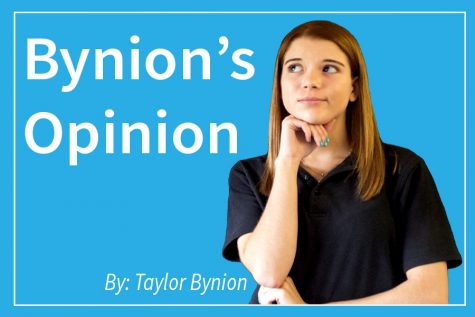Coup de Grace: Be a role model not a runway model
Every year, the Victoria’s Secret Fashion Show finds its way to our TVs, and millions of people happily enjoy the spectacle without a second thought towards the unrealistic body image standards that these models set.
Ratings for the event have slowly declined year after year, which may indicate that the public is slowly losing its support for the company’s unrealistic body image. However, Victoria Secret, along with the rest of the fashion industry and the media, should respond to the public’s acknowledgement that the women they see on their screens are not realistic examples of an average woman’s body type.
The models we see at events like this and others are presented as the ideal body type. These stick-thin women presented to us by the media set a standard of the “perfect” body image. However, only about five percent of the population has the same body type as these women, according to the Park Nicollet Melrose Center for Eating Disorders.
While it may seem obvious to everyone that the models we see aren’t realistic, the media and the fashion industry put pressure on women in other ways. Plus size clothing sizes start at a “normal” women’s clothing size eight, while the average American woman is a size 16, according to USA Today. It’s clear that the average woman’s body isn’t represented by the media or the fashion industry.
These media representations take a toll on women. Out of all the girls who read magazines, 69 percent said that the pictures they saw made them want to change their body, according to the Park Nicollet Melrose Center.
It’s important that women see a variety of body types on the runways of fashion shows, the screens of TVs, and in the pages of magazines. It’s important that society presents all physically-healthy body types as beautiful, because if you’re healthy, and within a weight that is healthy for you, then that’s your ideal body type.
The fashion and entertainment industry should work to incorporate all healthy body types into their presentations. Some companies are already working to do so, like J. Crew. The company that used people of all shapes and sizes to model their clothes this year. Efforts like these show that representation of the average person is possible, and more companies should work to take this step.
While these industries need to work to change they way they represent the average person, it’s also the job of the average individual to be a role model for other men and women. We can attribute women’s negative body image on the media, yes, but it also stems from ourselves.
According to a study done by the Dove Self-Esteem Project, the discussion of body dissatisfaction can reinforce your own negative self-esteem, and can also develop and reinforce body dissatisfaction in others. Part of the problem stems from ourselves. The media certainly needs to work on their end of this issue, but we as individuals also need to try to be positive body image role models for others.
It’s by no means an easy feat, but we need to love our healthy body types for what they are and show that self-love to others, instead of sharing our dissatisfactions with our bodies. We need to be role models and show other women that, while we may not be the “ideal” body type presented to us by the media, we are still beautiful and can still love ourselves. Lead by example, and others will follow.
Grace Mottley is the Assignment Editor for The Patriot and jcpatriot.com.








